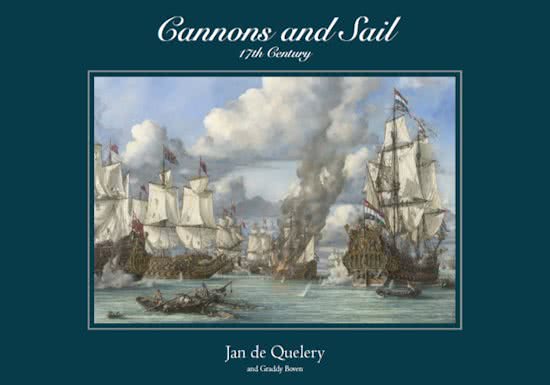About
Jan de Quelery (1957) saw the first light of day on 19th July 1957 in the Flessenstraat at Flushing, right next to a patrician residence called the ‘Van Dishoekhuis’. His parents were Jan de Quelery and Eleonora de Quelery-Cats. When Jan was one year old, the family moved to 34 Hendrik Avercam-plaan in the Scheldewijk district also at Flushing . He grew up in this house, spending his time playing football and ‘soldiers’. From an early age, Jan was often to be seen by the water’s edge, lost in daydreams about the ships on the River Scheldt. In his second year at elementary school, he was inspired by his first drawing lessons and found an outlet for his creativity. The school organised a drawing competition in De Quelery’s sixth year, when he was 12. On impulse, he decided to enter the competition, producing a drawing of a ship at sea and confidently submitting the final result. The standard of the drawing was so high that his teacher, amazed that Jan was able to produce such good work, awarded him a place in the top three of his class. Without him being conscious of it, the drawing competition steered De Quelery in a certain direction and ensured that, from now on, ‘the boy at the back of the class’ would get the attention he deserved.
After leaving elementary school, Jan began a three year course at the Lower Technical School in the Zaaihoekweg in Flushing to train as a bench fitter, taking extra theory lessons. When he completed his studies at the age of 16, he refused to continue his education at the Middle Technical School, opting instead to work for the yacht builder “Standfast” at Breskens, where he could gain experience in the coating and plating of ships in stainless steel. Jan thoroughly enjoyed his time there, but after a year and a half, decided to go to the “Scheldeschool”, run by the “Koninklijke Maatschappij de Schelde” (now Damen Shipyards) at Flushing. There he spent two years training as a machine bench fitter, specialising in 0.03 alignments and following up with two years of rotations within “De Schelde”. With this work experience under his belt, De Quelery was able to find a job in the machine factory. At this point Jan, now 21 years old, left his parental home to live in the Schuitvaartgracht in Flushing. One day, he saw a reproduction of a maritime painting of two clippers in a shop window. He was irresistibly drawn to it and really wanted to buy it, so he took up his courage and entered the shop to ask the price. It was 250 guilders, more money than De Quelery had at his disposal, so he had to save for it. As soon as he had the money, Jan went back to the shop and was desperately disappointed to find that the painting had just been sold. Rather than give up, he resolved to recreate the image on canvas himself and bought the necessary materials from an art supplies shop. It wasn’t long before Jan discovered that working with oils was more difficult than he realised, so he decided to take lessons in the technique of oil painting. He signed up for free evening classes at the Art Centre in the Kuiperspoort in Middleburg, and became a proficient maritime painter. De Quelery is also a talented guitarist and has been playing in a blues rock band since 1980.

In the meantime he kept working, for a while with “Bronswerk” and then back to “De Schelde” at the “Scheldepoort” ship repair yard. In 1986, De Quelery felt the need to set out and see the world, so he decided to emigrate to New Zealand. He found a place to live in Auckland and got a job with a yacht builder. Circumstances forced him to return to the Netherlands late in 1988 and in 1989 he began working as a maintenance bench fitter at “Pechniney” in the industrial area, Flushing East. In 1990 he moved to the firm of “Jansen en Jansen”, who subcontracted him out to “De Schelde”, where, in addition to ironworking, he was given the task of installing foundations and watertight doors. In 1992, Jan de Quelery returned to New Zealand inspired by the ‘beauty of the country’ and its ‘feeling of freedom’. He made the most of this opportunity, moving into a house in Christchurch and giving full rein to his creativity. His time overseas generated inspirational maritime paintings, which he was able to sell for good prices. Jan decided the time was right to follow his heart, so he returned home to Flushing in the Netherlands in May 1993, where he became a full time maritime painter, devoting the rest of his life to the art which he loved so well.
In 2007 Jan de Quelery was approached by the Zeeland pilot Andre Bakker a year before the commemoration of Michiel de Ruyter. He asked him to produce a large painting of the “Four Days Sea-Battle” for the ‘350 Years of Michiel de Ruyter’ celebrations. Jan was delighted to oblige and went in search of a workspace big enough to accommodate the large canvas he wanted to use. De Quelery normally worked in his own studio at home, but he needed more room for the 1.5 by 2.2 meter painting he had in mind. He found the ideal place in the former heavy construction hall of the Royal Shipyard “De Schelde” at Flushing. He started painting and the Four Days Sea-Battle was unveiled in all its glory, in the presence of Queen Beatrix, during the official opening of the ‘Michiel de Ruyter Year’ on 27 March 2007 in the Saint Jacob’s Church at Flushing. This painting inspired the commission of a series of six paintings of sea-battles dating back to Michiel de Ruyter’s time, namely, the Two Days’ Battle, the Battle of Medway, the Battle of Solebay, the Battle on Schooneveld and the Battle at Kijkduin.
Jan de Quelery has built a considerable international reputation as a maritime painter, aquarellist and illustrator. His work is on display in galleries, museums and international sailing events around the world, including the Aukland Maritime Museum, Park Royal Wellington N.Z., Broadway Gallery New York, The Wally Findlay gallery NY, Art Maritiem Hamburg/Messe, Sail Antwerp, Sail Amsterdam, RAI Amsterdam-Europort, Europort Rotterdam Ahoy, the Royal Netherlands Navy Museum at Den Helder, the Royal Netherlands Navy, Work for Old People at Flushing, Art Marine UK, as well as many private collections. With this book, in which the six Michiel de Ruyter sea-battle canvases form the focal point, Jan gets the opportunity he so richly deserves to display his extraordinary talent. His work radiates confidence, shaped by time and presenting the rich seagoing history of both the Netherlands and Great Britain in his own vibrant and educational way.
Graddy Boven
Royal Netherlands Navy Museum, Den Helder
Page list

